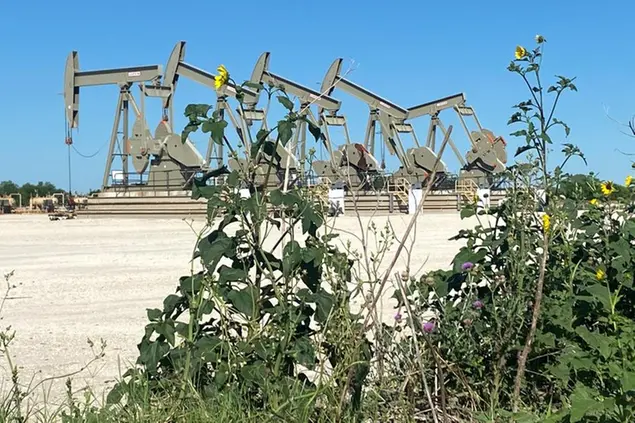PHOTO
Investors have remained resolutely bearish about the outlook for petroleum prices despite increasing confidence the U.S. Federal Reserve will cut interest rates to stimulate consumer and business spending.
Fund managers reverting to selling oil futures and options last week as the short-covering rally the week before rapidly ran out of momentum and negative sentiment returned.
Hedge funds and other money managers sold the equivalent of 48 million barrels in the six most important futures and options contracts over the seven days ending on Aug. 20.
Funds have been sellers in six of the last seven weeks, reducing their position by a total of 346 million barrels since the start of July, according to records filed with exchanges and regulators.
The combined position had been reduced to just 178 million barrels, the fourth-lowest on record in weekly data going back to 2013, down from a recent high of 524 million on July 2 (40th percentile).
Chartbook: Oil and gas positions
In the most recent week, managers sold European gas oil (-20 million barrels), NYMEX and ICE WTI (-18 million), Brent (-9 million) and U.S. diesel (-4 million), and only purchased U.S. gasoline (+3 million).
Positioning had become extremely bearish across the complex, with the limited exception of WTI, where it was just bearish.
Positions in middle distillates, the most sensitive to the business cycle, were the most negative since the mid-cycle slowdown in 2015/16.
Increasing confidence the Federal Reserve and other major central banks will cut interest rates to stoke consumer spending and business investment had not dispelled concerns about weak growth in oil consumption.
Traders were also concerned about pending output increases by Saudi Arabia and its OPEC⁺ allies from the start of October, which if carried out might boost inventories and further depress prices.
There was still considerable potential for short-covering and the rebuilding of bullish positions to help propel prices higher if sentiment becomes more bullish or at least less bearish.
For now, however, price increases have been capped by lingering doubts about the economic outlook and fear about OPEC⁺ adding more oil to the market.
U.S. NATURAL GAS
Portfolio investors lifted their position in U.S. gas slightly as the combination of hotter-than-normal temperatures and ultra-low fuel prices for power generators continued to whittle away excess inventories.
Hedge funds and other money managers purchased the equivalent of 163 billion cubic feet (bcf) of futures and options linked to the price of gas at Henry Hub in Louisiana.
Short-covering accounted for all the buying as funds repurchased 164 bcf of previous short positions over the week ending on Aug. 20.
As a result, the combined position was boosted to a net long of 515 bcf (46th percentile for all weeks since 2010), the highest for seven weeks.
Working gas inventories have accumulated by only 100 bcf over the last six weeks, the smallest seasonal increase since at least 2010.
Inventories were still +378 bcf (+13% or +1.21 standard deviations) above the prior 10-year seasonal average on Aug. 16.
But the surplus has narrowed from +538 bcf (+20% or +1.44 standard deviations) as recently as July 5 as generators maximised the opportunity to use cheap gas to meet strong airconditioning demand.
With airconditioning season more than half over, it is virtually certain inventories will still be above average when the winter heating season starts on Nov. 1.
But the surplus is progressively eroding and is on course to be eliminated entirely before the end of winter 2024/25.
John Kemp is a Reuters market analyst. The views expressed are his own. Follow his commentary on X https://twitter.com/JKempEnergy
(Editing by David Evans)
